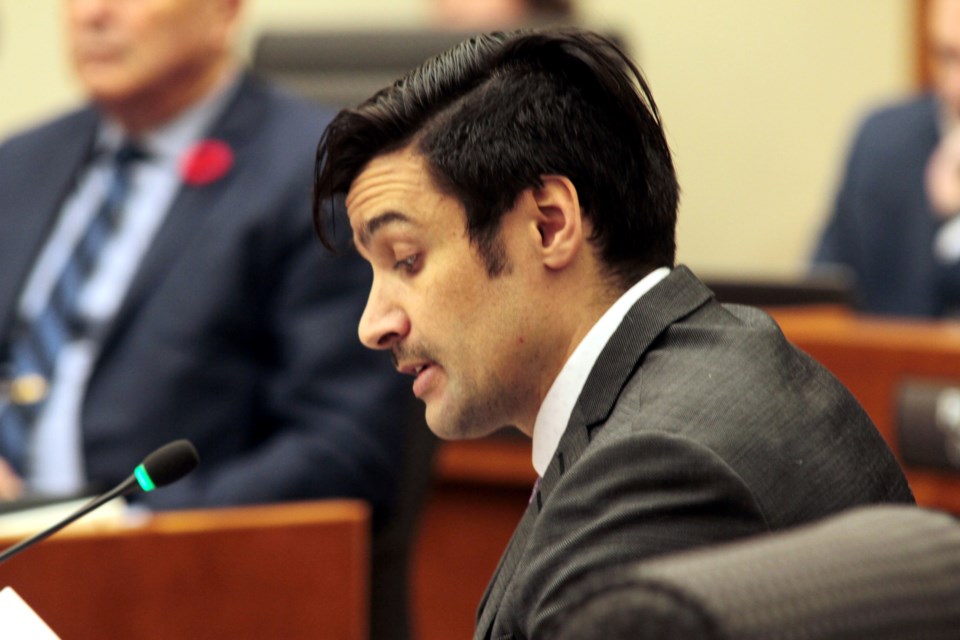THUNDER BAY – With record temperatures hitting dangerous levels of heat in the downtown core and minimal snowfall impacting major events such as the Ontario Winter Games, the City of Thunder Bay is seeing the impact of climate change and committed to meeting its net zero climate targets.
“Thunder Bay faces increasing threats from climate change, impacting infrastructure, public health and social equity,” said Commissioner Kayla Dixon.
The city’s climate adaptation strategy helps to manage the current and expected climate change effects by integrating climate considerations policies, risk assessments, emergency planning, strengthening partnerships, education and infrastructure investment.
“Climate change is responsible not just for an increase in average temperatures but an increase in severe weather and weather unpredictability,” said climate adaptation coordinator Jacob Porter in an update to council on Monday.
He said that severe weather has reduced the lifespans of infrastructure and the existing infrastructure deficit and has increased demand for emergency response and places health and safety at risk.
The climate adaptation update report also states that even if global action is taken to reduce greenhouse gas emissions, the impacts of climate change are going to intensify for decades to come.
Porter noted that the goal is to “manage the unavoidable impacts of climate change” through a climate adaptation strategy that utilizes “climate mitigation actions in the net zero strategy.”
Coun. Shelby Ch'ng asked how much of the city’s $30 million infrastructure deficit is due to climate change.
Porter said that administration would not be able to quantify that amount because assessments haven't tracked whether infrastructure failures are due to a major weather events or simply end of life.
He does believe “a particular percentage” has been impacted by climate change, but he could not provide a number.
According to the report, the city experienced four major flood events in 2008, 2012, 2016, and 2022.
Coun. Andrew Foulds pointed out that in those same years, the water pollution and control plant needed to be purged because of the high water levels.
In 2022, the plant bypassed 20 times into Lake Superior because of severe weather events. Porter also stated that the 20 bypasses at the control plant weren’t necessarily “raw wastewater entering into the lake.” The bypassed water has undergone some level of treatment before being released.
Foulds asked if low-impact developments like storm water runoff in cities helped to prevent large amounts of water from overfilling the control plant.
Porter said, “low-impact developments are a great way to manage peak flows when you have a lot of water flowing in at once. It lets water drain through into your storm sewage system slowly over the course of maybe 24 hours, which helps give everything downstream time to process.”
“Because climate change is not just a change in averages, we are looking at that increase in extremes and variability. Those are the kind of steps that we need to take in order to manage these swings that you've seen year over year or even within the same year,” he added.
The report stated the city has experienced an average of 10.5 days of above 30 degrees celsius whereas historically the average is only 2.7 days.
The above-normal temperatures present a serious health risk, particularly for children, older adults, people living with chronic illness, and outdoor workers.
Coun. Rajni Agarwal pointed out that one of Porter’s slides indicated the Fort William Downtown Core was particularly hot.
Agarwal asked if there was any way to cool down these areas of the city.
Porter explained that these specific areas are predominantly concrete structures and asphalt roads with little vegetation causing an urban heat-island effect.
To reduce this effect, the city would need to construct an urban canopy by building more green spaces in the downtown core.
“Our urban forest manages to decrease temperatures in our community by several degrees. In some cases, offering shade in high-risk areas,” said Porter.
The rising temperatures also create a risk of wildfires inside the city limits.
Although a major wildfire inside the city would pose a serious health and safety risk, the report states that significant weather-related events such as flooding in Southern Ontario and Quebec, extreme hailstorms in Calgary, and a significant wildfire in Jasper National Park, have caused a 406% increase weather-related insurances claims through the Insurance Bureau of Canada.
Coun. Kasey Etreni asked if the city is “fire ready” and prepared to go through a situation where a wildfire ignites within its boundaries.
Porter said that being prepared for a wildfire in Thunder Bay is “always an ongoing challenge.”
“I believe that we have been in a process of continual improvement on our emergency management procedures,” he said.
“I believe that we have taken lessons learned from emergency exercises and from our past emergency response experiences as well as the experiences that other communities have gone through for their forest fires, experience, and evacuations,” he added.
